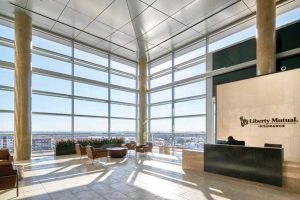
Safe and functional solutions for schools
This issue of security is of the utmost importance for families and communities, especially as facilities age and may be less adaptable to threats from fire, active shooters, and other emergency situations. This is why it is so important for the industry to stay ahead of the curve by aligning with industry standards and best practices.
Take school safety, for instance. A rise in active shooter events is forcing school districts across the U.S. to completely rethink their facilities’ entry points and other exterior design characteristics that could affect safety. The priority is making these buildings more secure and keeping those inside insulated from outside threats. For some districts, this could mean installing security bars or bricks over windows. For newly constructed schools, it can be utilizing windows capable of withstanding ballistic objects, or even designing buildings with fewer windows altogether.
However, a window-less classroom deprived of natural light and inaccessible to the outdoors may not be a physical environment conducive to educational success. While daylight itself is a highly coveted trait of building interiors, the National Library of Medicine acknowledges several studies which indicate it can potentially impact circadian rhythms which are the physical, mental, and behavioral changes a person experiences following a 24-hour cycle, including sleep quality and duration.3 Adequate access to daylight can also positively impact vision, color rendering, and overall psychological wellbeing. Conversely, lack of exposure to daylight can have negative effects including “biological darkness,” which can be more pronounced and concerning for some individuals during the winter months, given the fewer daylight hours per day.
Accordingly, there is a natural pull within the building enclosure industry to balance these elements so children can get maximum benefit from their school experience, which is partly tied to their physical environment. Creating an environment in which kids can grow and thrive is something just about everyone can get behind, and it motivates designers to make decisions based on the students’ best interests.
The immediate solution to this scenario would be to make the window opaque, blacking it out from the outside, while still allowing some natural light inside. This compromised solution will still influence interior and exterior aesthetics, and is just one example of the types of tradeoffs modern designers must frequently consider.
Designing with ICC, ASTM, and WELL
The International Code Council (ICC) is one of the primary drivers behind the innovations of built environments. The ICC is a leading global source of model codes and standards whose building safety solutions are used to ensure safe, affordable, and sustainable communities and buildings worldwide.




